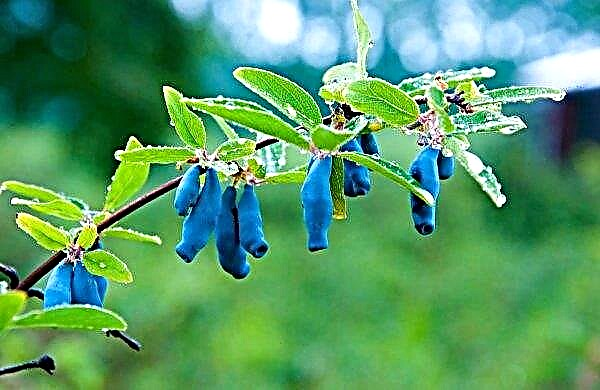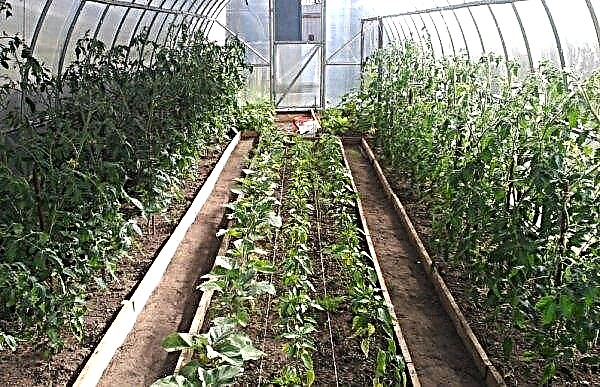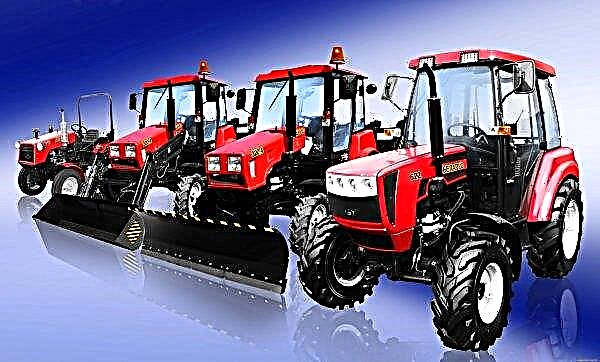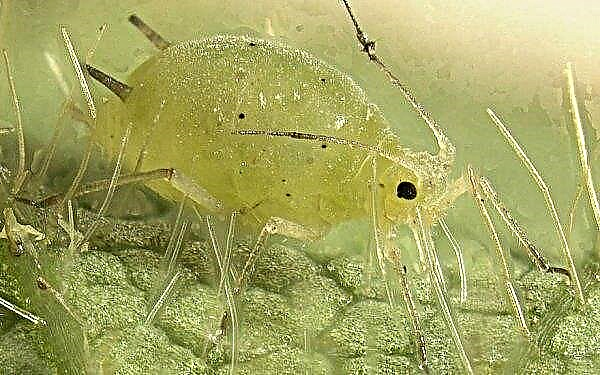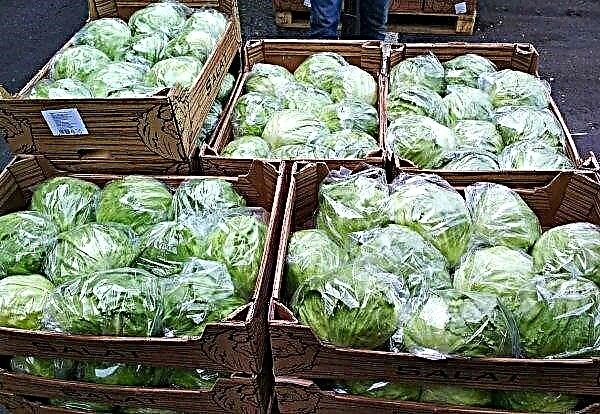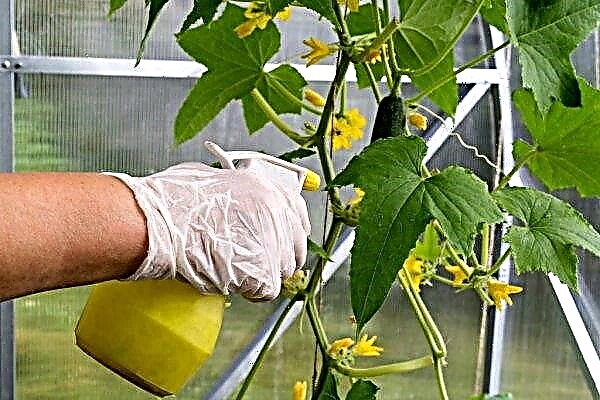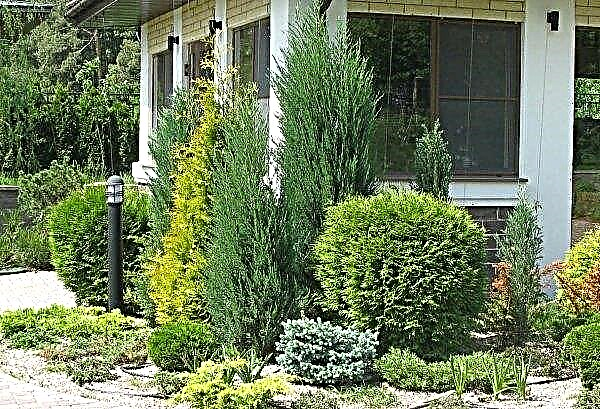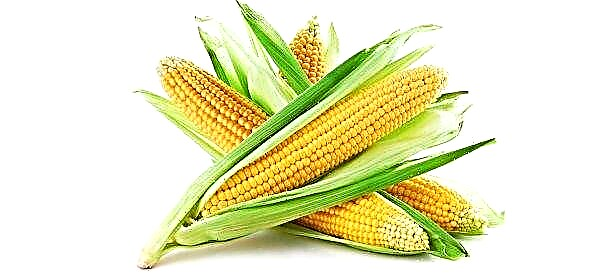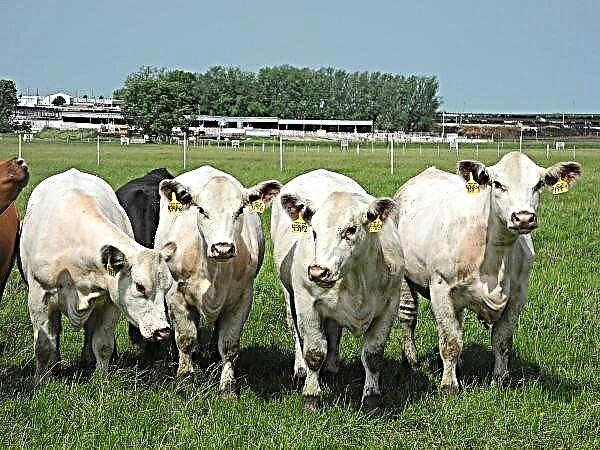Kumato tomatoes are distinguished by an unusual dark color and sweet taste. This product of the work of breeders attracts many gardeners around the world. To grow this variety, you need to know all the subtleties associated with it.
Grade description
Unusual variety "Kumato" has a list of distinctive characteristics. These include the following:
- have a rich dark brown or almost black color;
- bushes of tomatoes of this variety grow from 1.5 to 2.2 m;
- Kumato tomatoes are indeterminate;
- fruits have a spherical or plum-like shape;
- the variety is mid-season, the crop can be harvested 120 days after planting;
- the skin of tomatoes is dense and matte;
- the flesh has a dark red color with an admixture of green;
- the diameter of the Kumato tomato is on average 5-6 cm;
- the weight of one tomato is approximately 80-120 g;
- up to 15 kg of crop can be harvested from 1 m² of plantings;
- This variety has a stable immunity to almost all known "tomato" diseases.

Advantages and disadvantages
- The advantages of this variety include:
- good taste;
- low calorie content (20 kcal / 100 g);
- a large number of nutrients in the composition;
- simple landing conditions;
- unpretentiousness in leaving;
- resistance to hot weather;
- high yields;
- immunity from most "tomato" infections;
- The product is easy to transport.
- Disadvantages are most often identified by buyers of the finished product, and among them you can find such:
- the skin of the fruit is too strong, which is not always convenient when cooking;
- the unusual color of tomatoes does not inspire confidence in everyone;
- gene modification, which causes doubt among the supporters of "clean" nutrition.
Self-growing seedlings
Kumato tomatoes, unusual for domestic vegetable growing, can be grown independently. For successful cultivation of the variety, it is necessary to correctly determine the timing of sowing, prepare tanks, soil and seeds, as well as to understand the nuances of sowing and care of seedlings.
Did you know? The breeder who created this variety is Luis Ortego from Spain. The patent for this product belongs to the Swiss company Syngenta. In professional terminology, it is called Olmeca F1.
Optimum timing for sowing
Sowing seeds is best done in early to mid-March. This period is optimal for a better harvest.
The soil
The soil mixture for growing tomatoes of this type can be bought ready-made. Also, it will not be difficult to cook it yourself if you have the necessary components. To do this, mix:
- 60% peat;
- 30% humus;
- 10% sand.
Capacity for growing
Seeds are better to germinate in separate cups. You can also use oblong boxes. When the seedlings begin to grow, they are transplanted into larger containers, where they remain until they are transferred to a permanent place in open soil.
See also indeterminate tomatoes such as:
Seed preparation
Sowing material must be trained in several stages:
- To begin with, all seeds are immersed in a glass of water. Those that float to the surface are thrown out due to unsuitability for sowing, and those sunk to the bottom are dried.
- Then they are prepared for the next processing step, which consists in disinfecting the material with a solution of potassium permanganate. For effective disinfection, they are kept in this environment for no more than half an hour, and then dried again.
- The next step is soaking in a growth stimulator. Seeds are left in it for the period indicated in the instructions. Most often it is about 10 hours.
- If you wish, you can spend bubbling material for sowing using a bubbler - a special device that acts on seeds soaked in water with oxygen-saturated bubbles for several hours.
- Additionally, the seeds are also hardened in the refrigerator on the lower shelf.

Sowing seeds
Seeds are planted in separate containers or general boxes filled with soil mix. The planting depth should be 0.8–2 cm. If a common container is used for sowing, the distance between the seeds should be made at least 2 cm. They are sprinkled with soil on top and moistened. The containers must be covered with plastic wrap, which must be removed after 5 days. After a while, when the sprouts appear 2 leaves, seedlings dive in separate containers.
Seedling Care
Tanks must be stored in a place where a constant temperature is around +25 ° C. Humidity should be sufficient and not fall below 60–80%. The room should be well-lit. If there is not enough light, you can buy a lamp that will help continue daylight hours.
Important! Incandescent lamps for lighting seedlings can not be used.
Watering should be carried out as necessary, while frequent watering is best avoided. Humidify only the soil. Fertilize the plant after a dive. You need to feed seedlings 2 times with a break of 14 days.
Seedling hardening
Tempering seedlings can begin 2 weeks before transferring to a permanent place. Containers with seedlings are taken out onto the street, gradually increasing the duration of their stay in the open air. According to another scheme, hardening should be started immediately 2-3 days before planting.
Planting seedlings in a permanent place
1.5 months after sowing, the seedlings become sufficiently developed to transplant them into open ground. For the reliability of the decision to transplant, it is necessary to inspect the bushes. If they have such signs, then they are ready to move to the garden or to the greenhouse:
- height is 35 cm;
- 8-10 leaves;
- thick stalk;
- developed rhizome;
- healthy look.
As a rule, seedlings begin to be planted in May. You need to do this according to the following scheme.
- Dig holes in the soil staggered at a distance of 0.5-0.6 m from each other.
- Pour them with plenty of water.
- Carefully remove the tomatoes along with the rhizome and soil from the container.
- Plant seedlings to a depth of about 3 cm.
- From above to the top of the tops, fill the rhizome with soil.
- Moisten the soil again.

Outdoor Care
After planting in open ground, the bushes need proper care. For this, it is important to properly organize watering, top dressing, as well as caring for the bush and soil.
Watering
Water the bushes as the soil dries. To moisten the soil, use the root type of irrigation, avoiding the ingress of water on the green part.
Important! Watering the tops can cause burns to leaves and stems.
Fertilizer application
Fertilizing Kumato is recommended once every 1.5 weeks. For this variety, complex feeding and mineral fertilizers are suitable.
Shaping and tying bushes
The bush does not need to be formed. You can remove the stepsons on the lower and lateral stems. It is advisable to tie the bushes in a vertical type. To do this, immerse the stick in the ground and attach the plant to it using synthetic matter.
Soil care
For soil care, weeds must first be removed as they appear. Loosening the soil is also appropriate, which must be done immediately after irrigation.
Did you know? As part of Kumato» Anthocyanins, ascorbic acid and aphrodisiacs are found.
The first mulching should occur immediately after planting, peat is used for this. In the future, to preserve moisture, it is also necessary to mulch tomatoes with organic substances. If necessary, they also carry out hilling.
Harvesting
Harvest can be harvested 120 days after the appearance of the first seedlings. From 1 m², you can collect up to 15 kg of tomatoes. Kumato tomatoes tolerate transportation well and can be stored for a long time (up to 2 months). Kumato is a tasty and healthy vegetable that impresses with its extraordinary color. This tomato variety is easy to sow and grow on our open spaces, which makes it even more attractive.
Kumato is a tasty and healthy vegetable that impresses with its extraordinary color. This tomato variety is easy to sow and grow on our open spaces, which makes it even more attractive.

